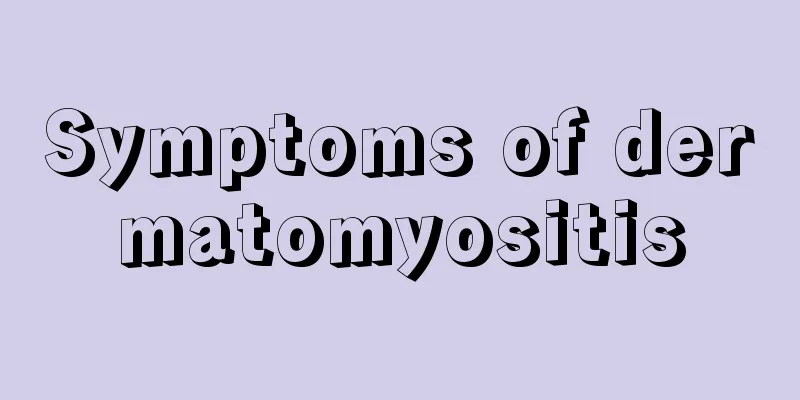What should I do if I have blood in my urine due to kidney stones?

|
Kidney stones are stones that appear in the kidneys. They can hinder the health of our kidneys and manifest themselves clinically with a series of symptoms, leading to symptoms of hydronephrosis and renal edema. The most common symptom is renal colic. The vast majority of patients need to choose symptomatic treatment, which can be achieved through early medication and eventually surgical treatment. Standard treatment methods should be selected based on the clinical manifestations of the disease. The symptoms caused by kidney stones vary depending on the characteristics of the stones, such as stone size, shape and number, surface roughness, location, degree of obstruction caused, and whether there is infection. If the stone is located in the renal pelvis or calyx, is immobile, and does not cause secondary infection or obstruction, it may be asymptomatic and is called a dormant stone. Stones located under the mucosa or adhered to the renal parenchyma are also considered static stones. When the stones are active or obstruct the renal calyces or renal pelvis, or when there is infection, a series of clinical symptoms may occur. (1) Pain: The most common symptom. 70% to 80% of patients have low back pain symptoms of varying natures. If the stone is large and has little mobility, it may cause dull pain, aching or soreness in the lower back. When the stones are small, mobile and have a rough surface, colic often occurs. Renal colic cases account for 40% to 50% of kidney stone patients. Colic often occurs at night or early in the morning, often with a sudden onset and severe nature, starting from the waist and radiating downward to the groin, testicles (in men), labia majora, and round ligament (in women). The pain is often sharp and worsens in paroxysmal forms, usually lasting for tens of minutes but can also last for hours or days. Sometimes it may be accompanied by shock symptoms, such as pale complexion, sweating, etc., and is often accompanied by gastrointestinal symptoms such as nausea and vomiting. Sometimes renal colic on one side may be accompanied by low back pain on the other side, which is called the "kidney-kidney reflex." Renal colic is caused by urinary tract obstruction caused by stones, which leads to urine accumulation in the renal pelvis, increased internal pressure, and expansion of the renal parenchyma and capsule. At the same time, the reflex peristalsis of the smooth muscles of the renal pelvis and calyx is enhanced and violent spasms occur. The phenomenon of pain radiation may be related to the blood supply of the spermatic cord, testicular and ovarian veins. It may also be related to its nerve supply. For example, the nerve supply of the testicles and kidneys comes from the same source, but the former is relatively more sensitive than the latter. Digestive tract symptoms such as nausea, vomiting, abdominal distension, and diarrhea are caused by the fact that the nerve supply to the kidneys and gastrointestinal tract originates from the celiac ganglion. (2) Hematuria: Hematuria after pain is a characteristic symptom of urinary stones, which is often caused by stones damaging the small blood vessels in the renal pelvic mucosa during strenuous activities. It is mostly microscopic hematuria, but it can also be manifested as macroscopic hematuria. According to statistics, during the acute onset of the disease, almost all patients have abnormal red blood cell counts in their urine, and 30% of upper urinary tract stones present as macroscopic hematuria. About 60% of patients have microscopic hematuria even in normal times. (3) Others: A small number of patients seek medical treatment for stones excreted in the urine. There are also some atypical symptoms. For example, kidney stones combined with infection can cause systemic symptoms such as fever and chills. A small number of patients may only present with recurrent urinary tract infections. For such patients, we should not stick to simple anti-infection treatment to avoid missed diagnosis and delay of the disease. In addition, giant hydronephrosis may manifest as an abdominal mass. Acute anuria is often caused by solitary renal stone obstruction. Occasionally, both kidneys are blocked by stones, causing oliguria or anuria. |
<<: What are the symptoms of neuropathy
>>: What causes blood clots in urine? Beware of these reasons
Recommend
What is the cause of anal itching
What is the cause of anal itching? Everyone shoul...
What should I check for fibroids
Fibroid is also a kind of tumor, but it is genera...
How much does thyroid cancer surgery cost
With the progress of society, there are now many ...
Human urine pH range
When conducting a routine urine test, there are m...
How to remove musty smell from clothes
The musty smell is a result of a humid environmen...
What foods are good for high white blood cell count? The answer is this
High white blood cell count is a result found in ...
What are the sequelae of radiotherapy for breast cancer
Breast cancer is a common malignant tumor disease...
What is keloid?
Keloid is a relatively common skin disease, also ...
Hair Mask and Conditioner
Hair care requires a good method. The common main...
What should I do if my fingers suddenly become swollen and itchy
What should I do if my fingers suddenly become sw...
Beware! Symptoms of hepatic encephalopathy caused by liver cancer
Hepatic encephalopathy, also known as hepatic com...
What is the best food for hyperthyroidism
During an attack of hyperthyroidism, you need to ...
How do beginners wear contact lenses
When we are taking pictures or doing some sports,...
Can small cell lung cancer be cured by taking medicine?
Can small cell lung cancer be cured by taking med...
How long is the appropriate time to stand upside down
Headstand is a form of exercise and is very good ...









